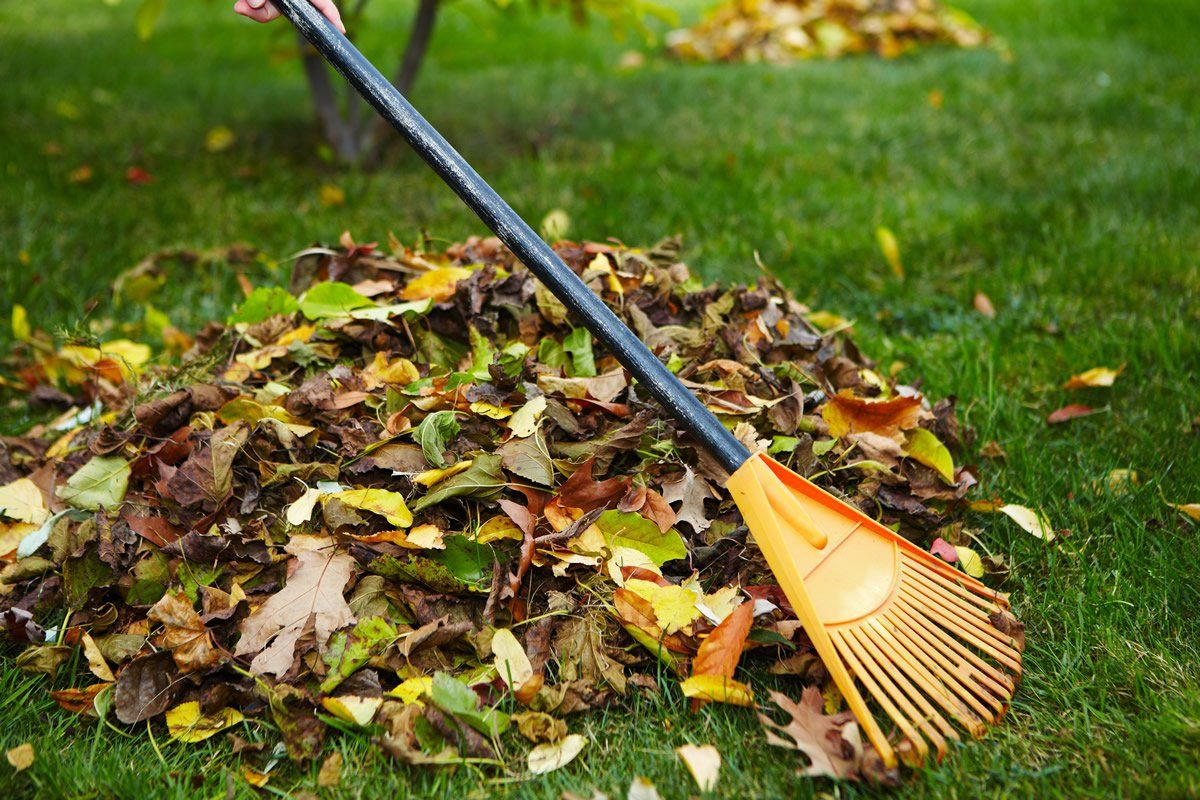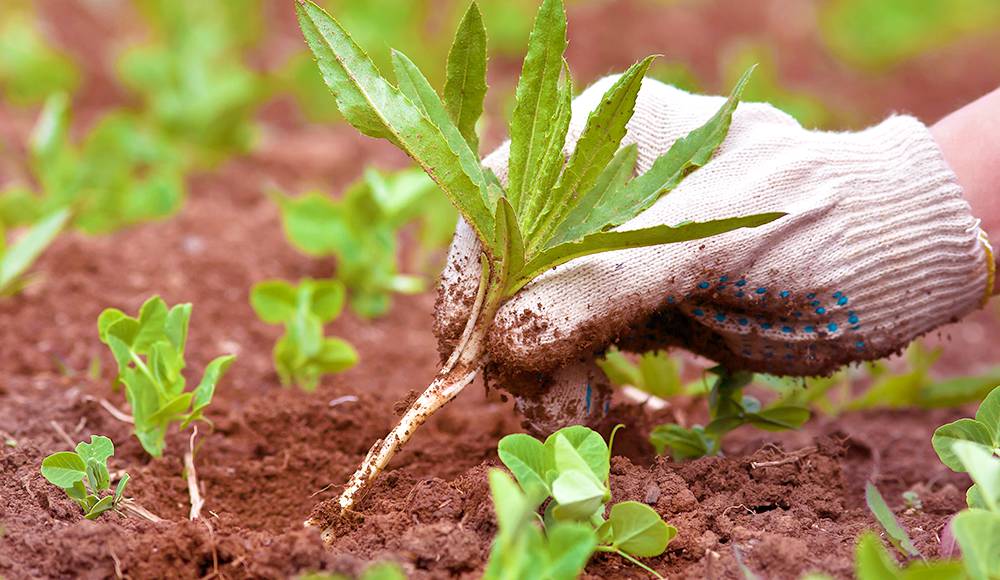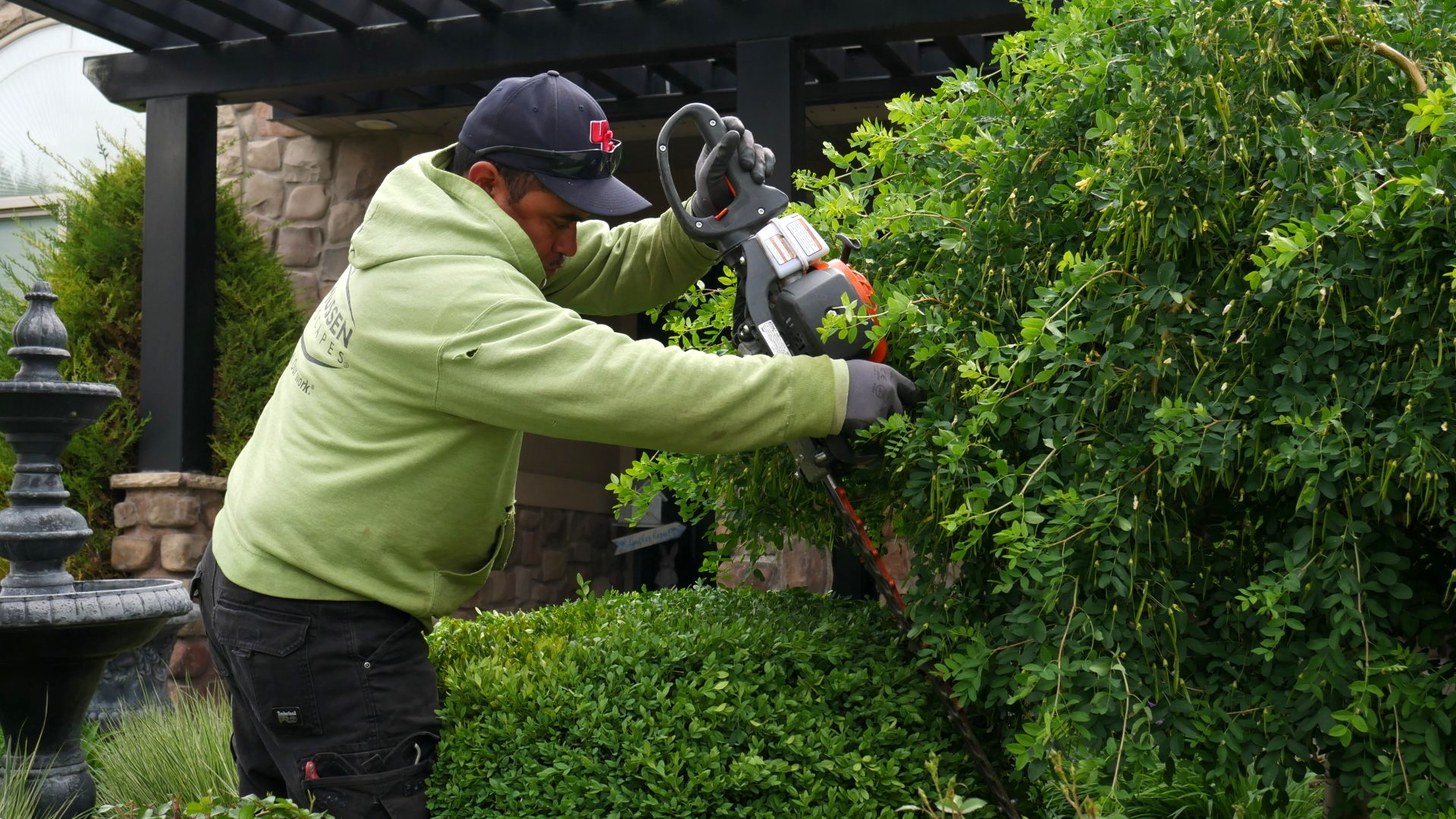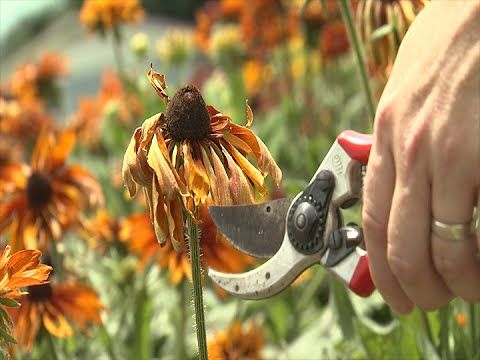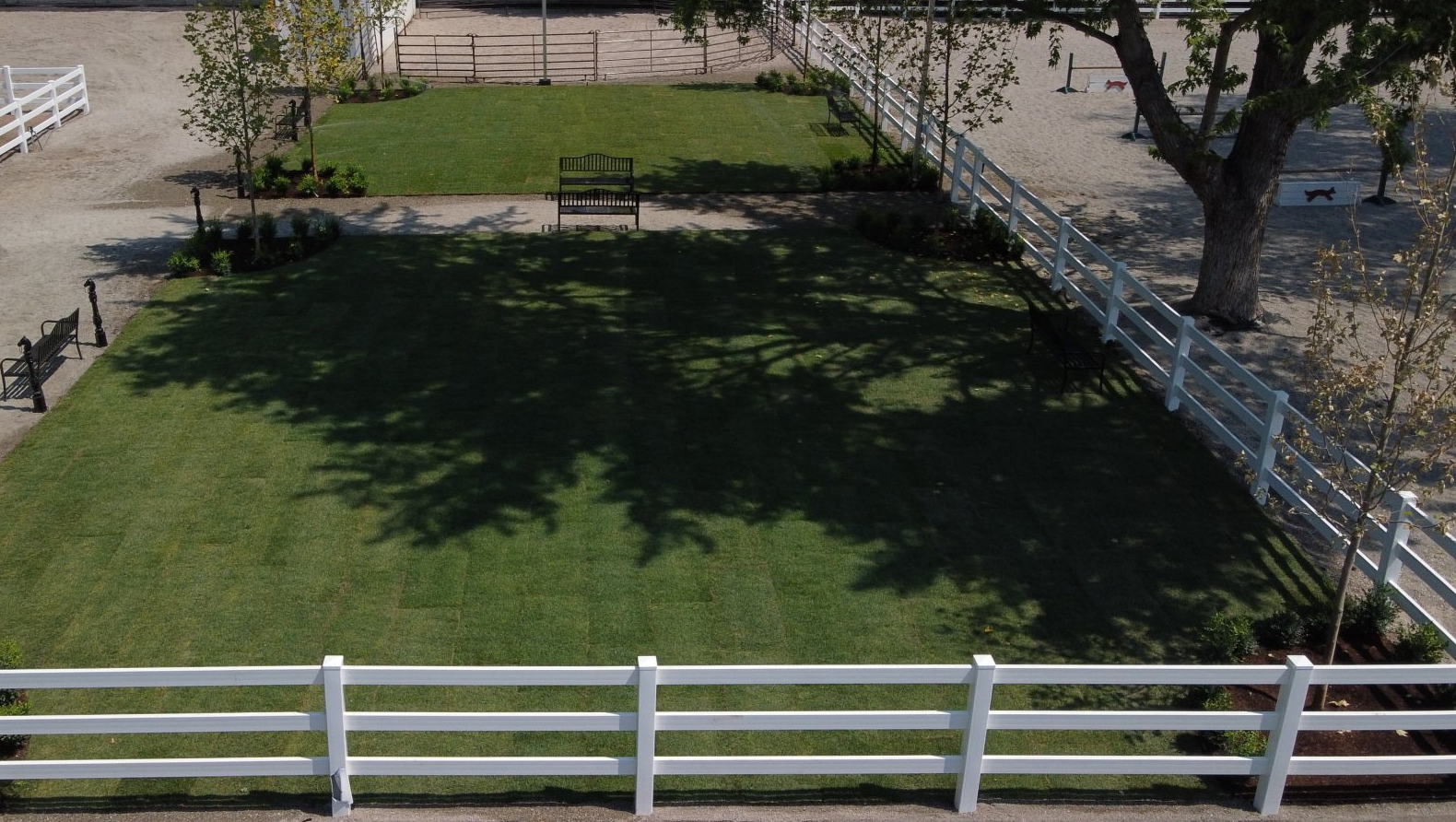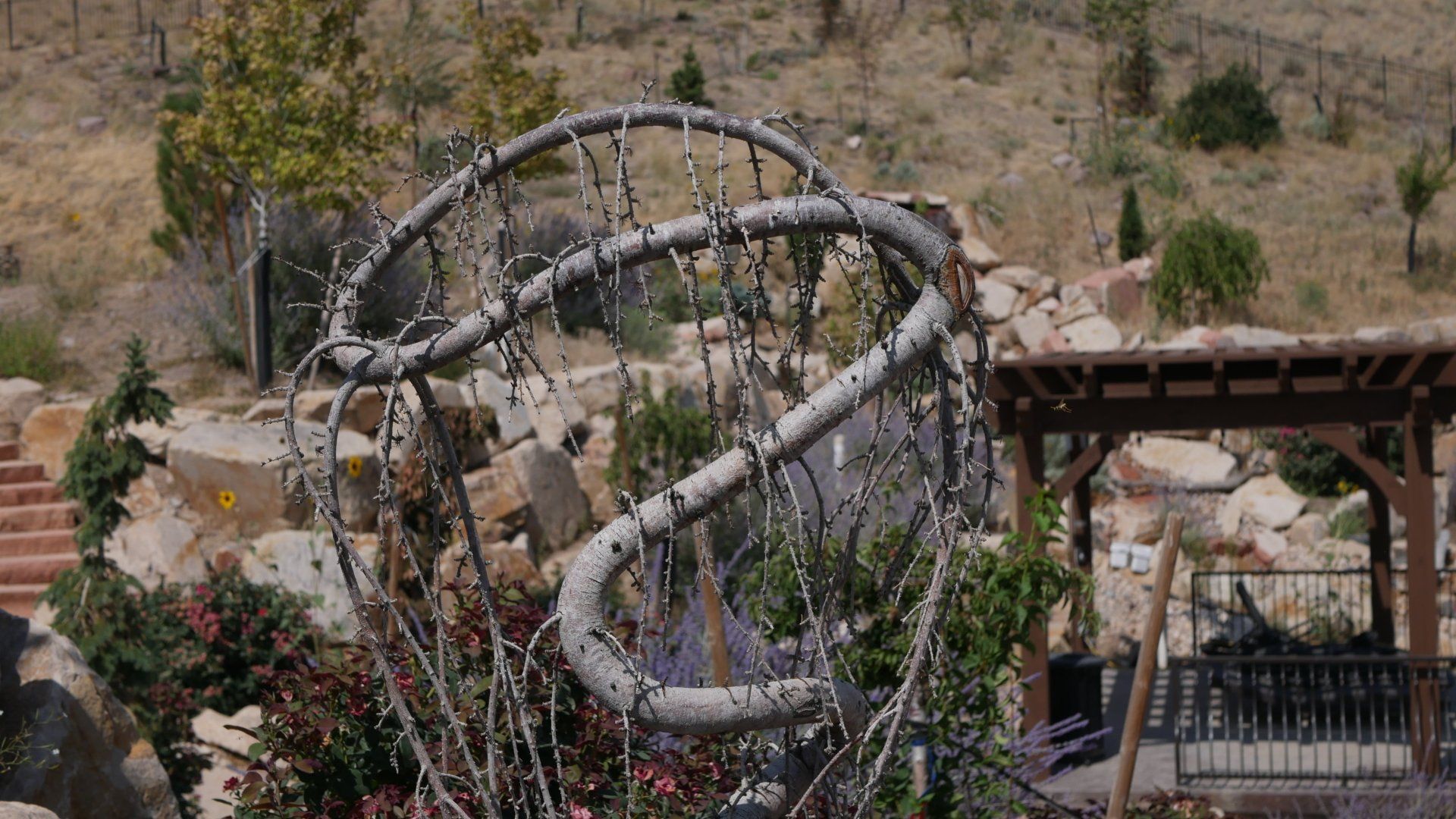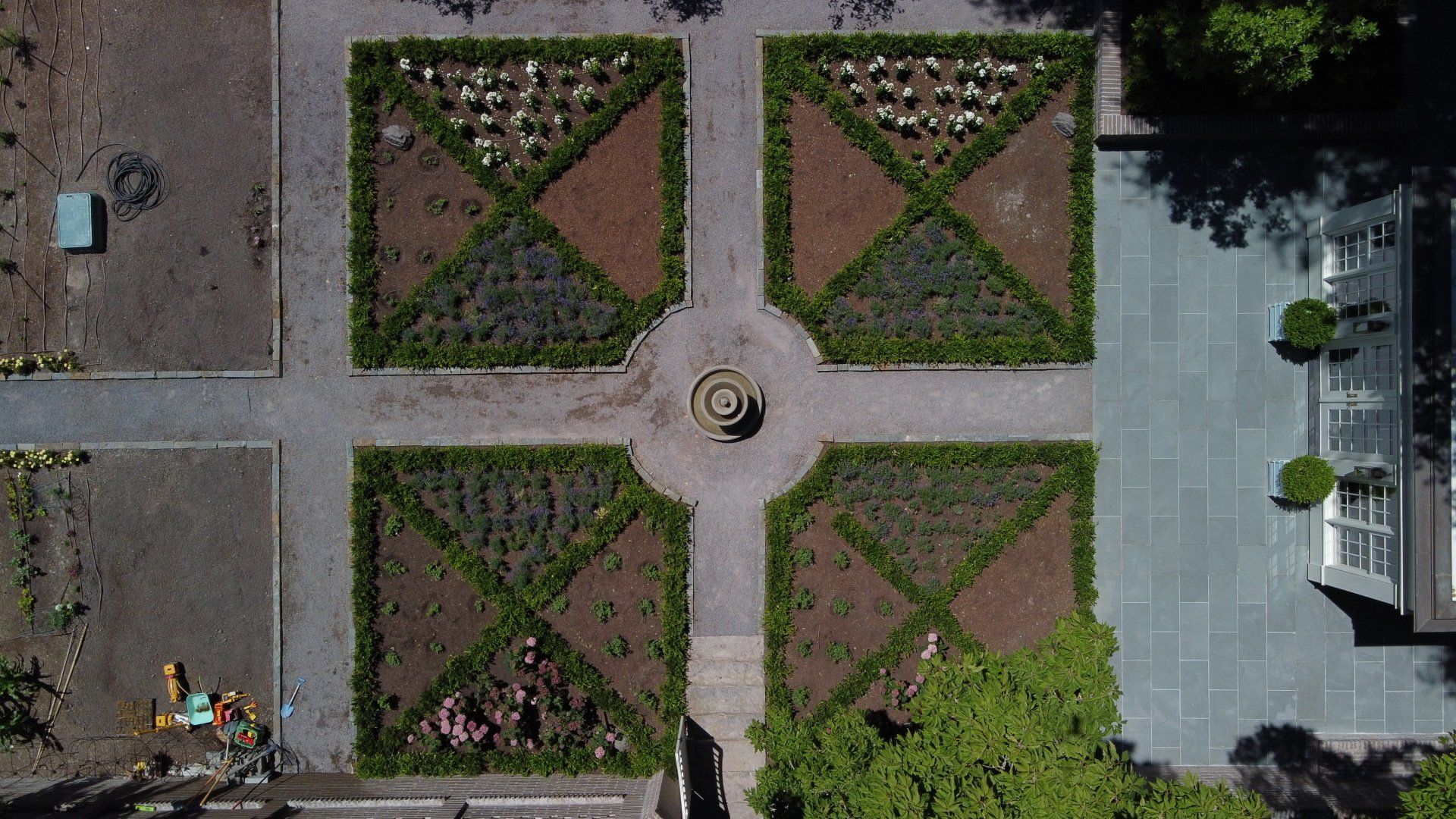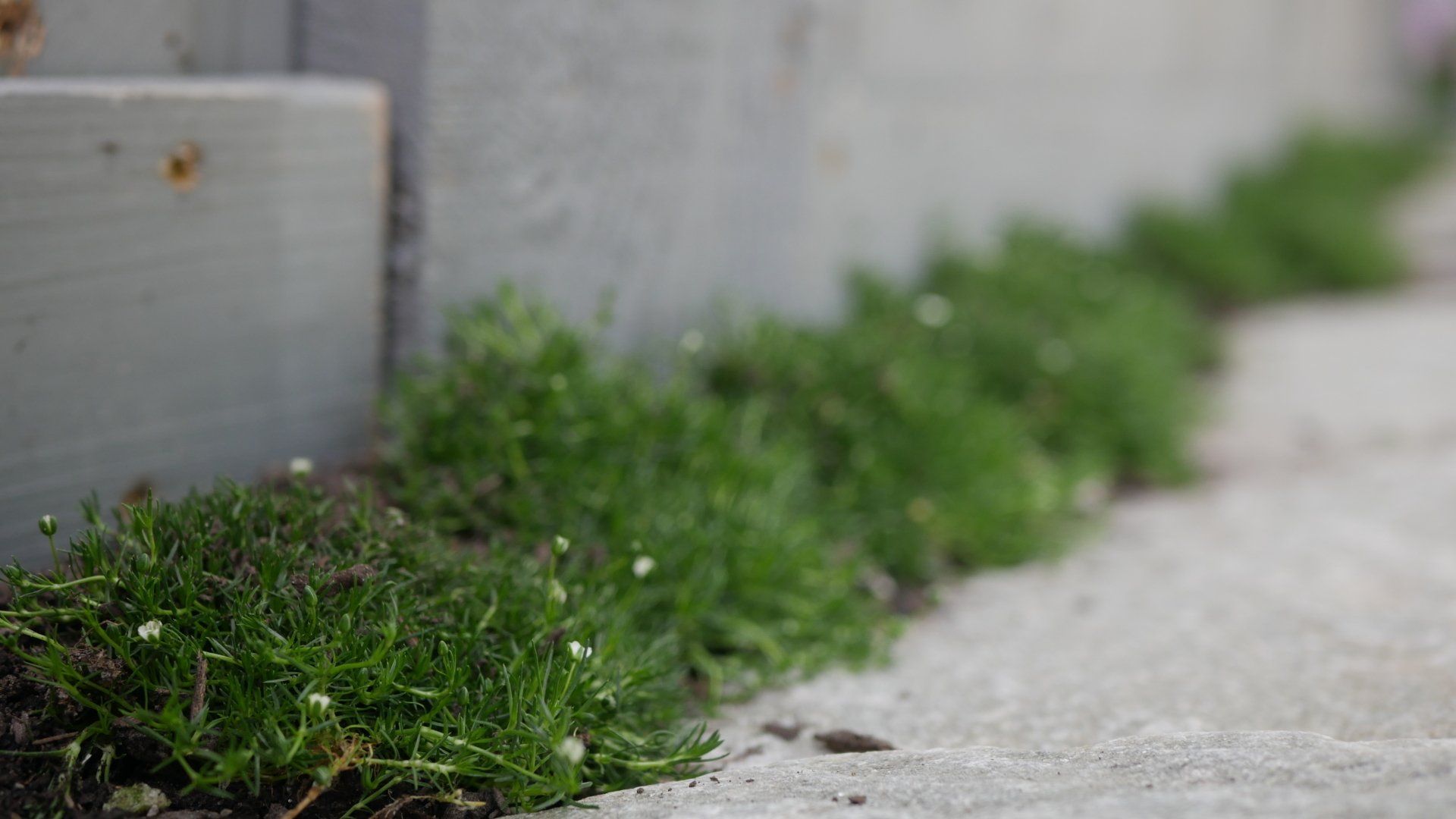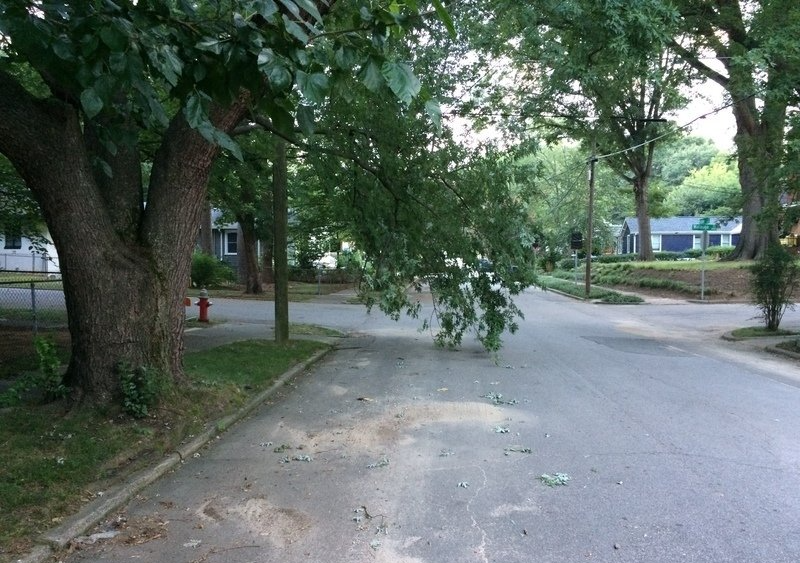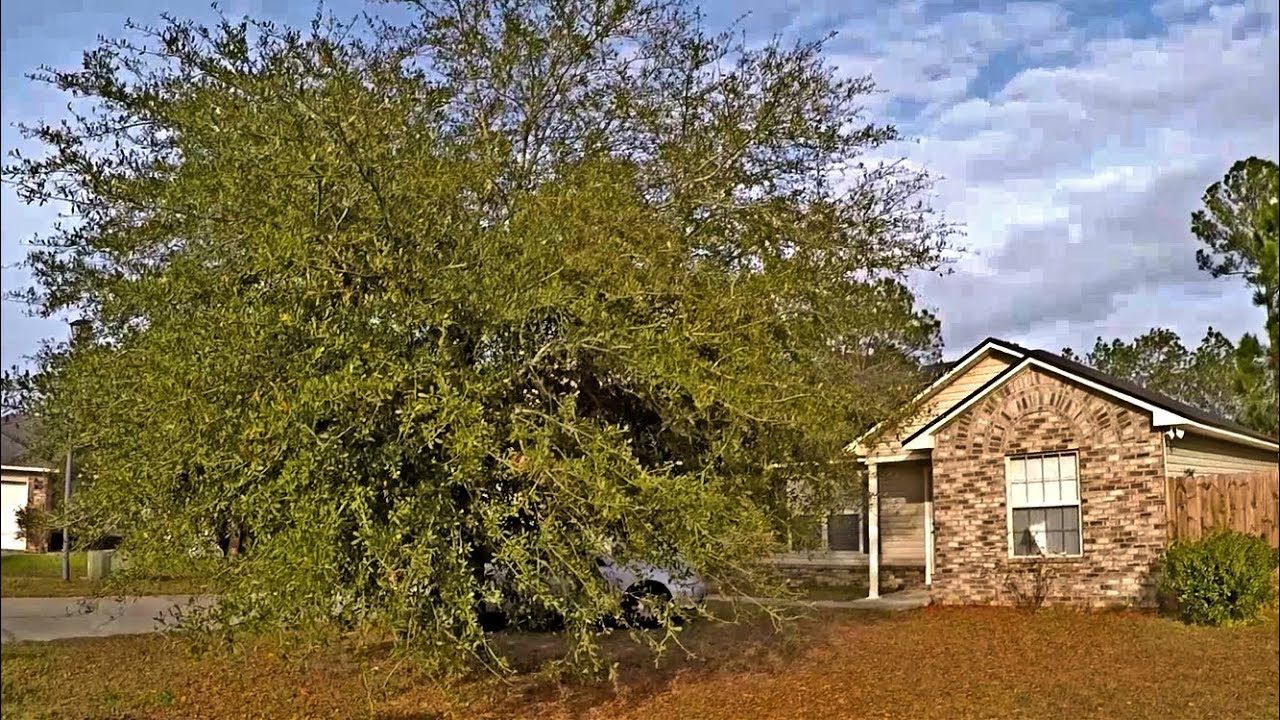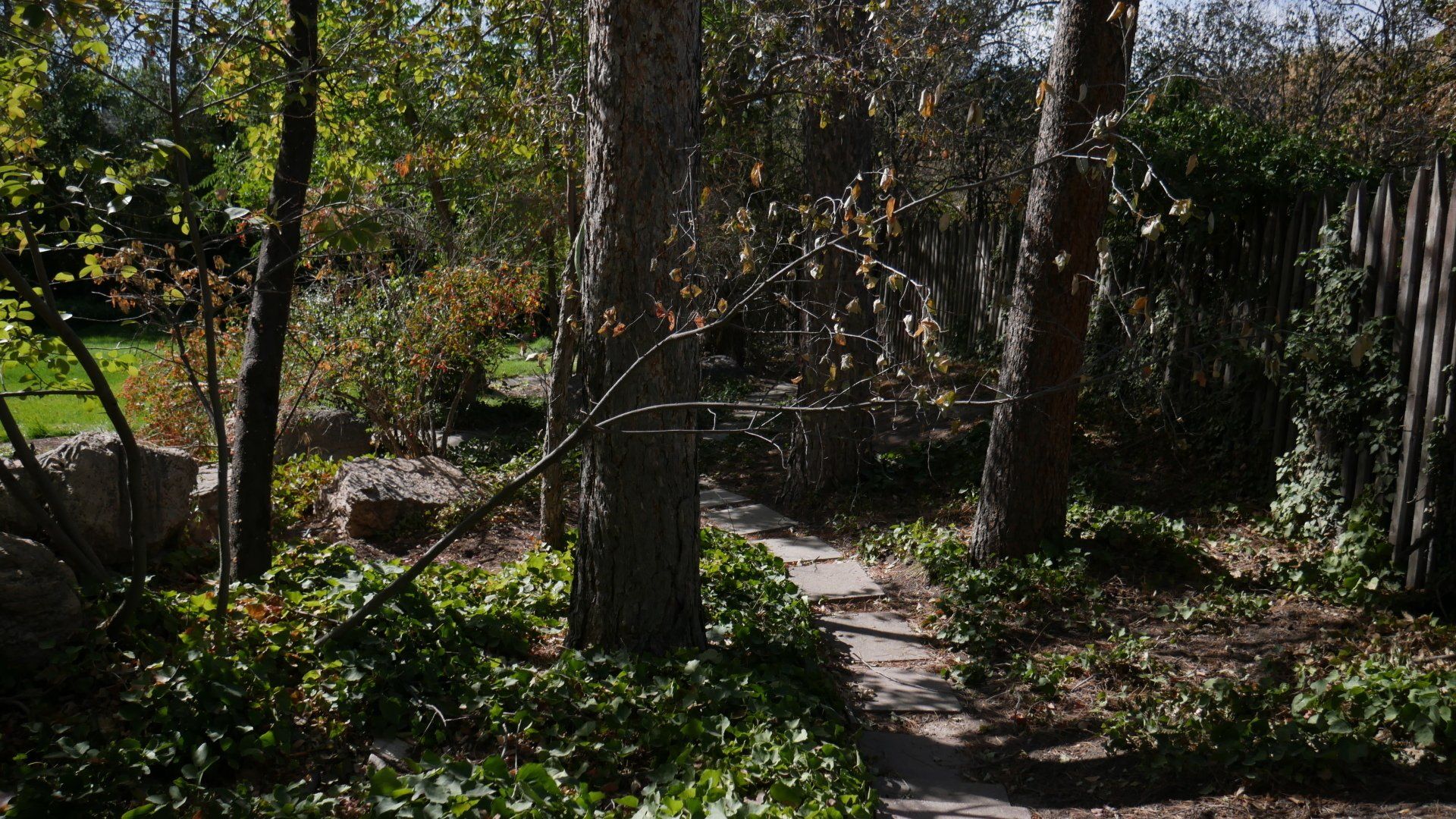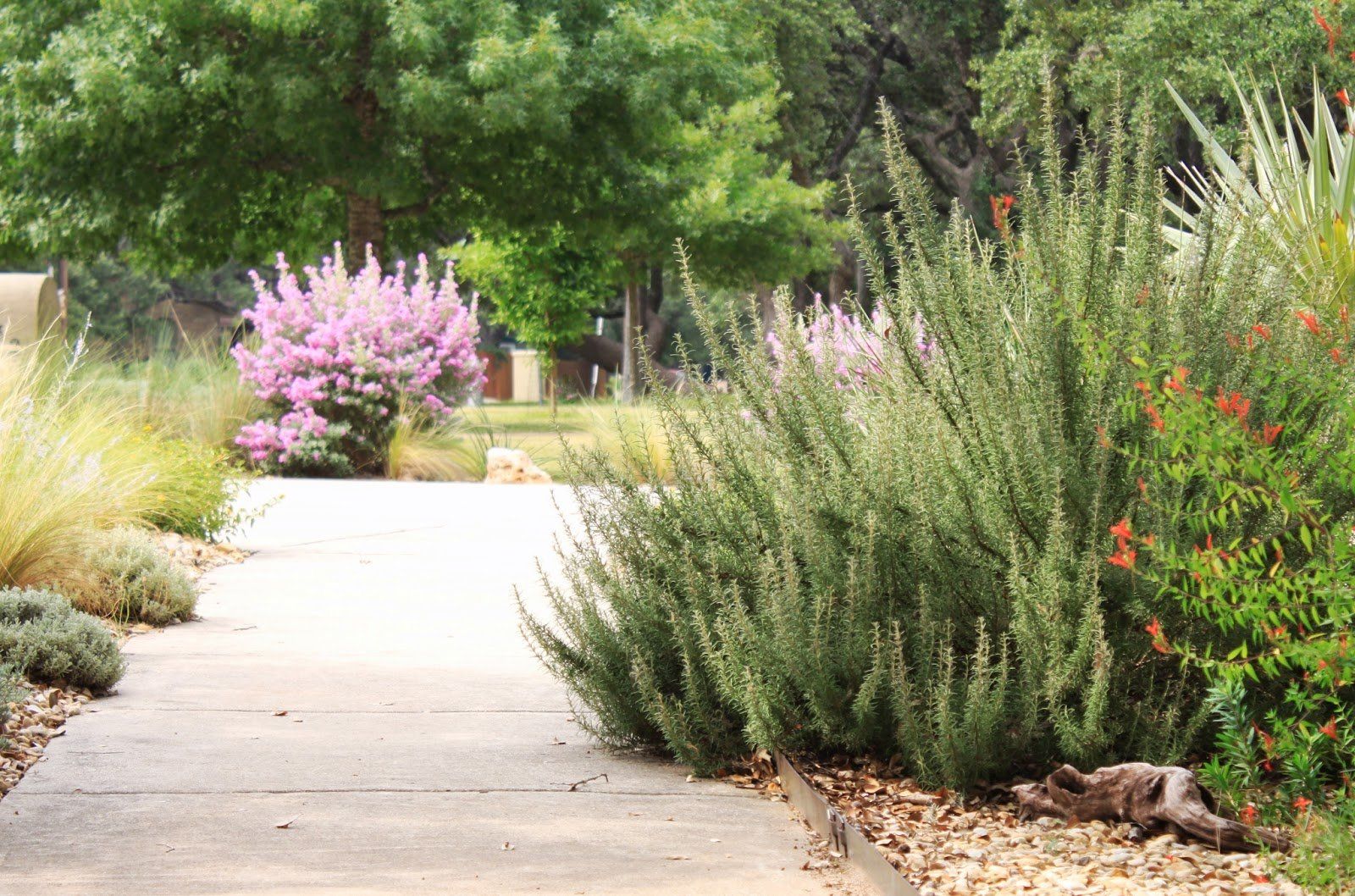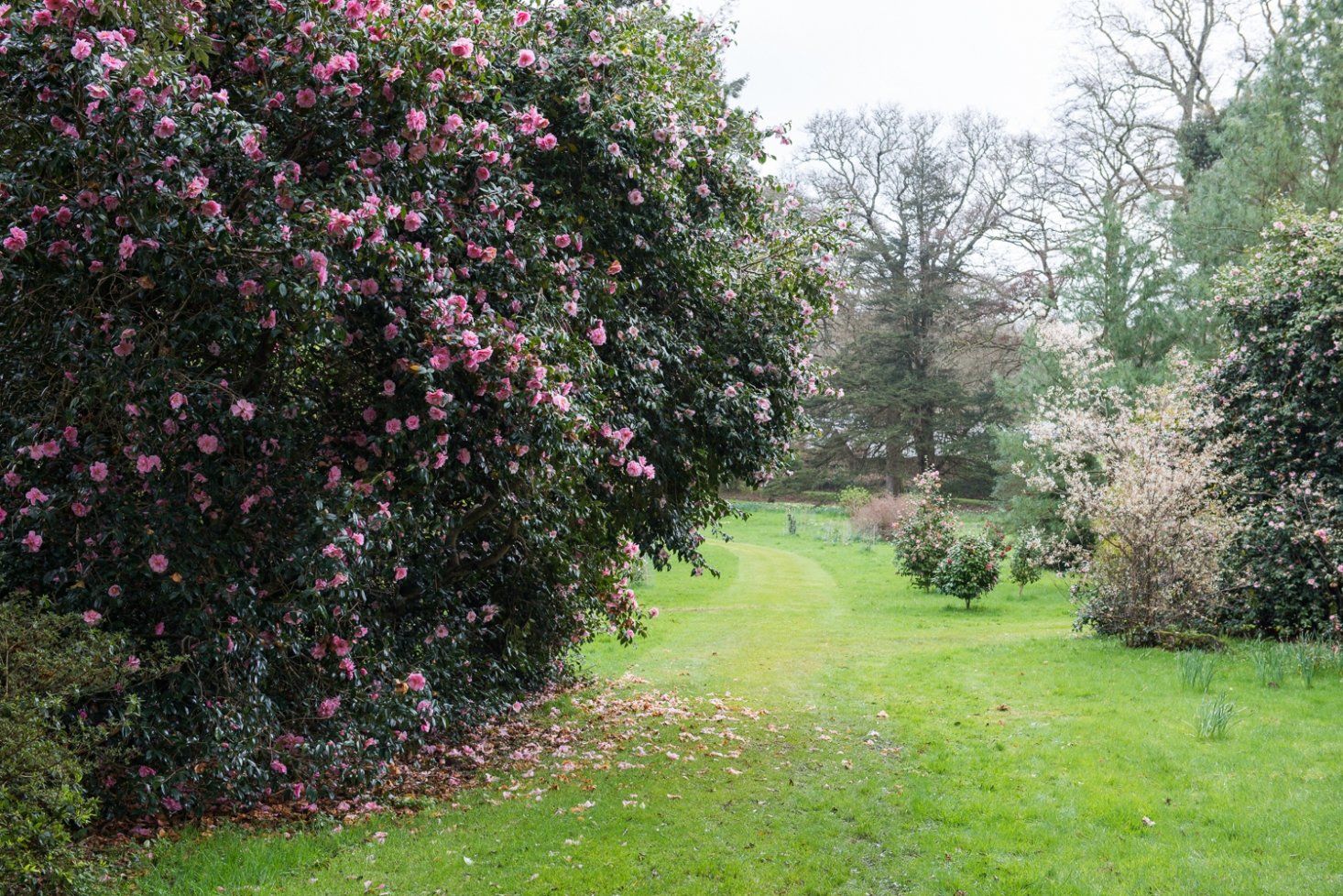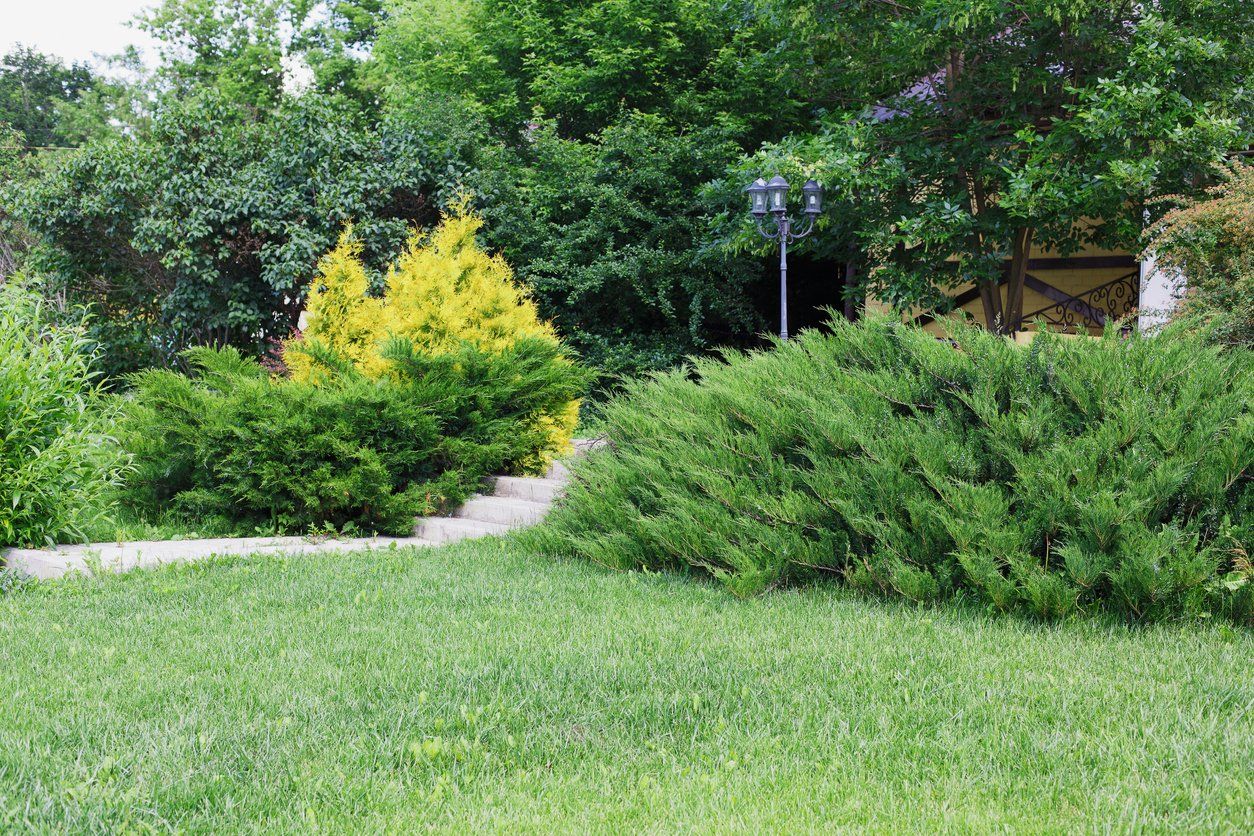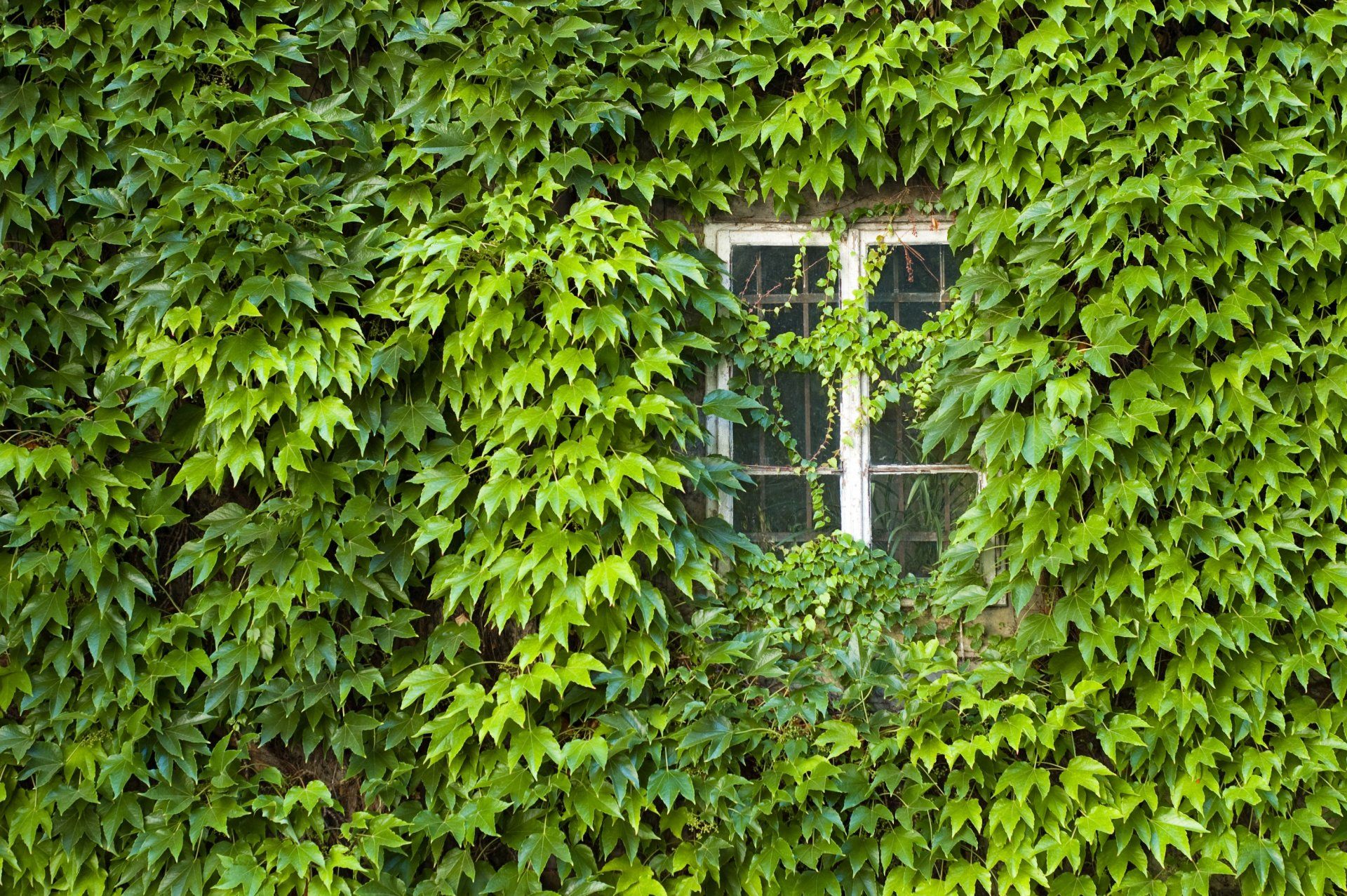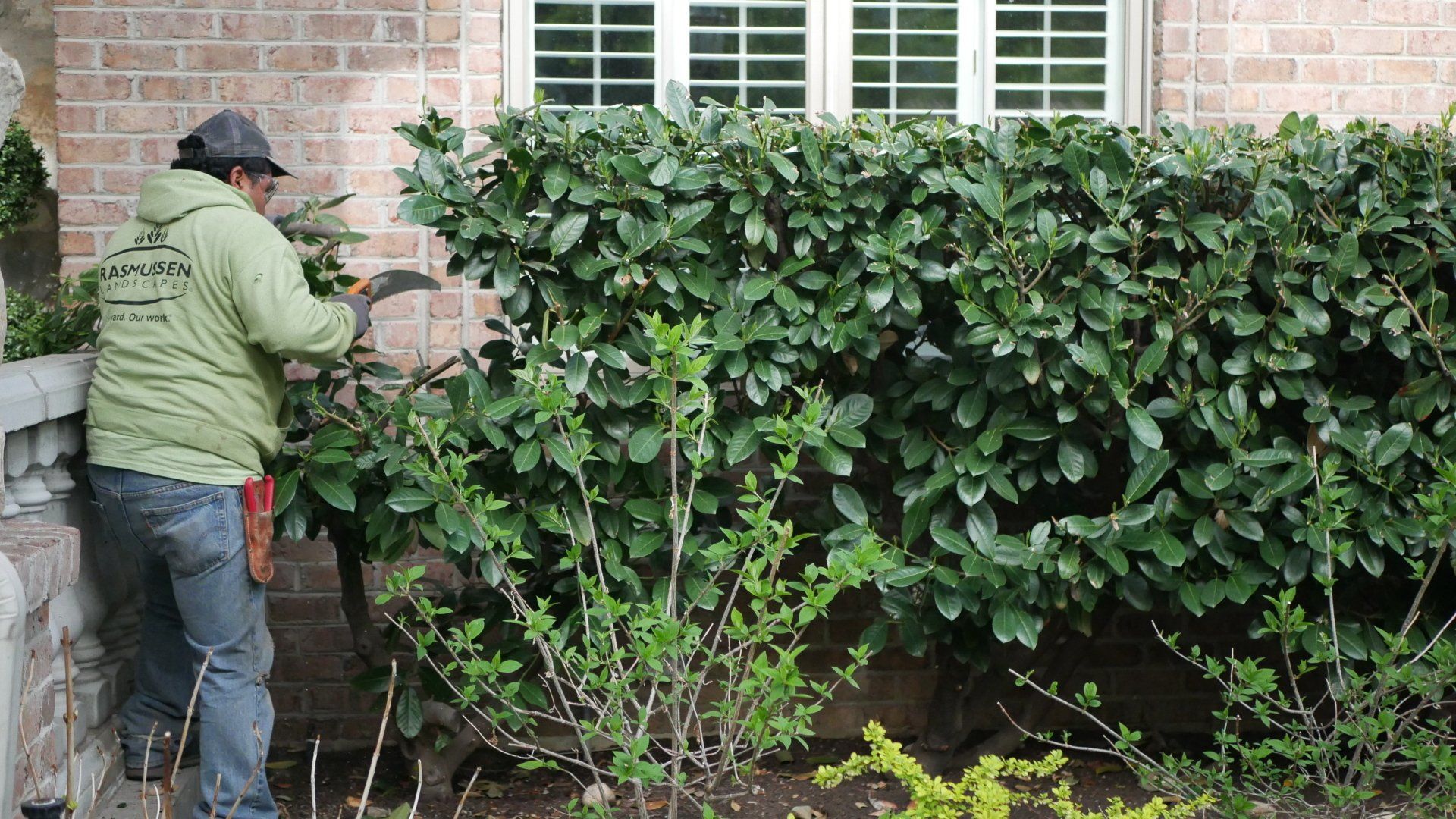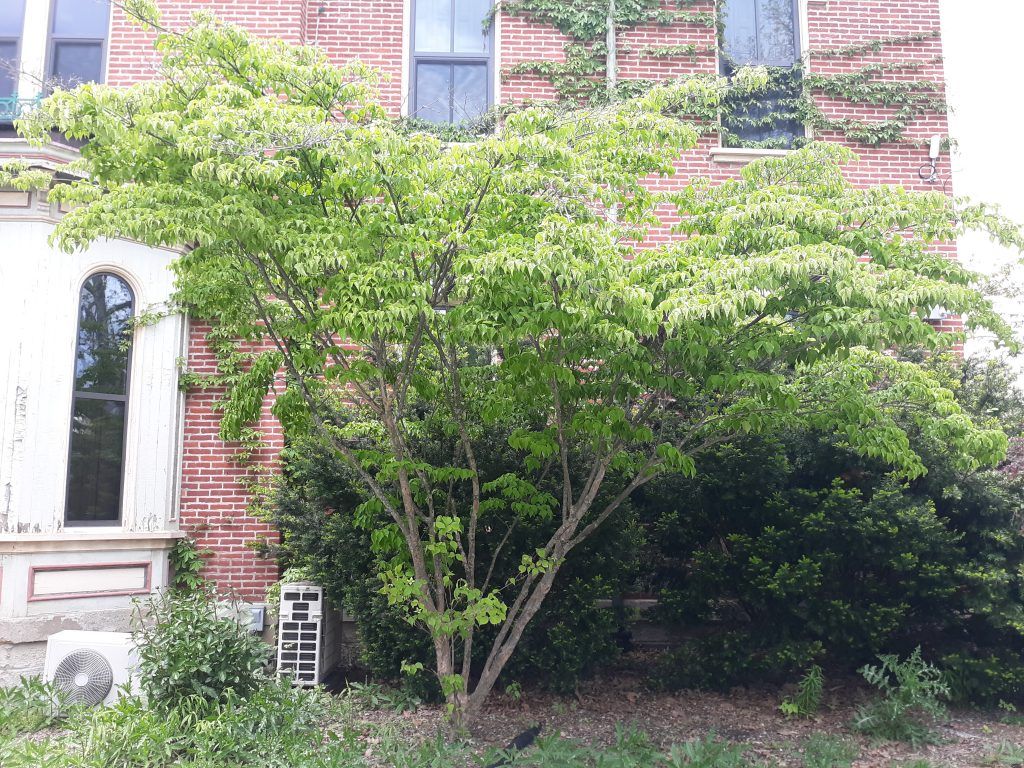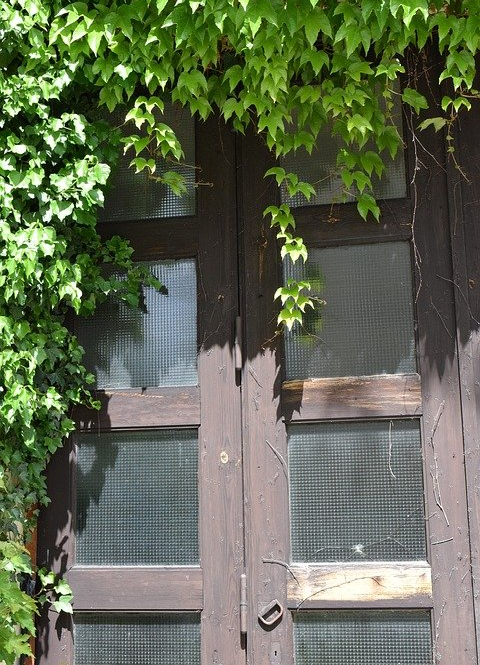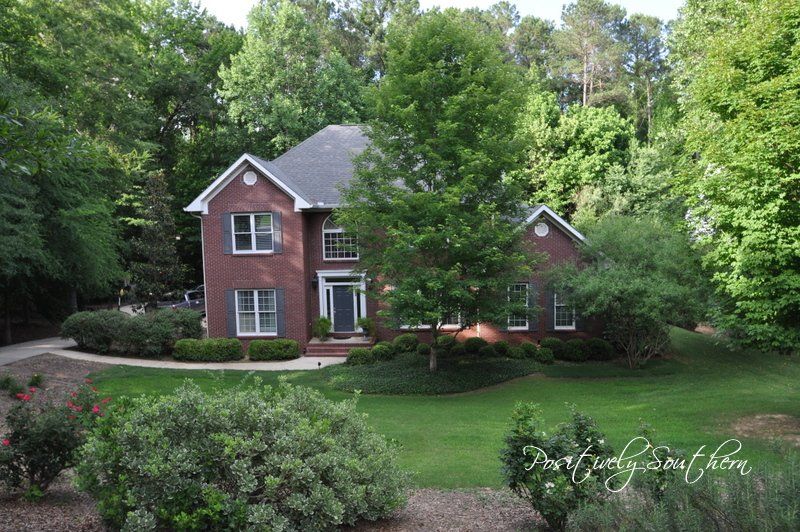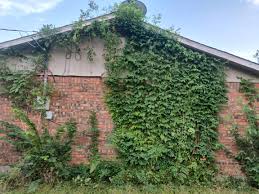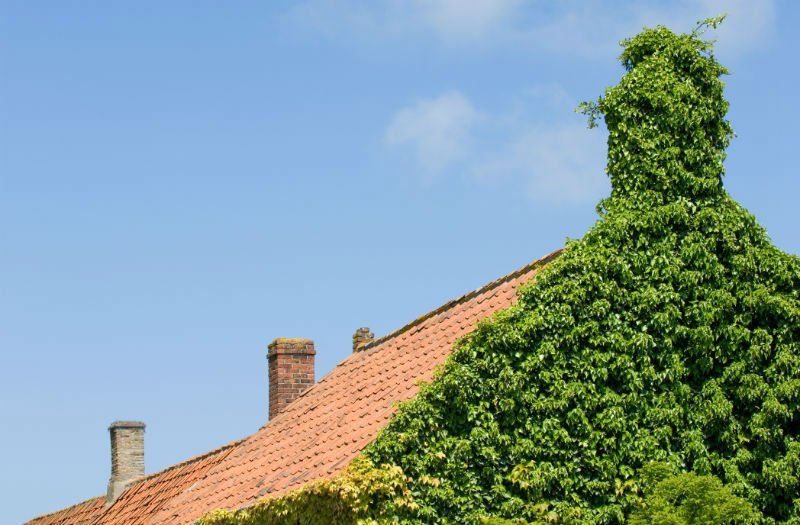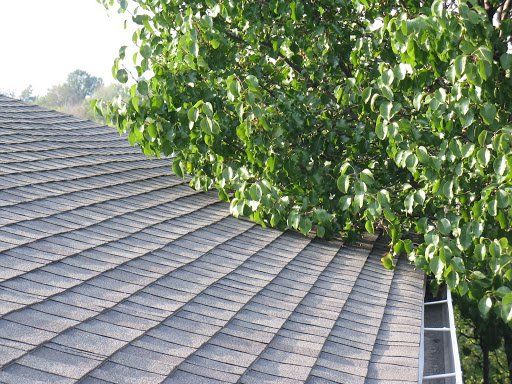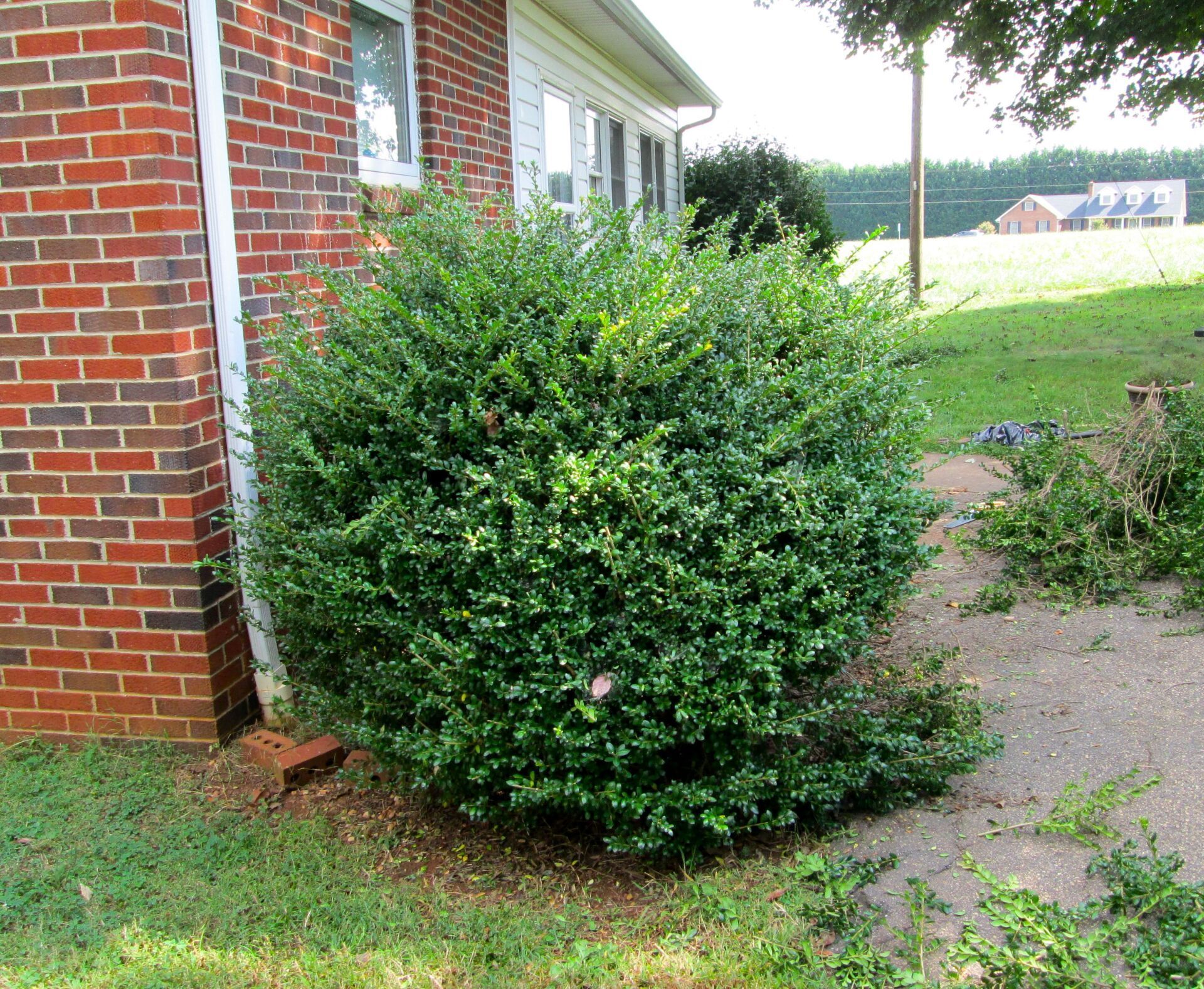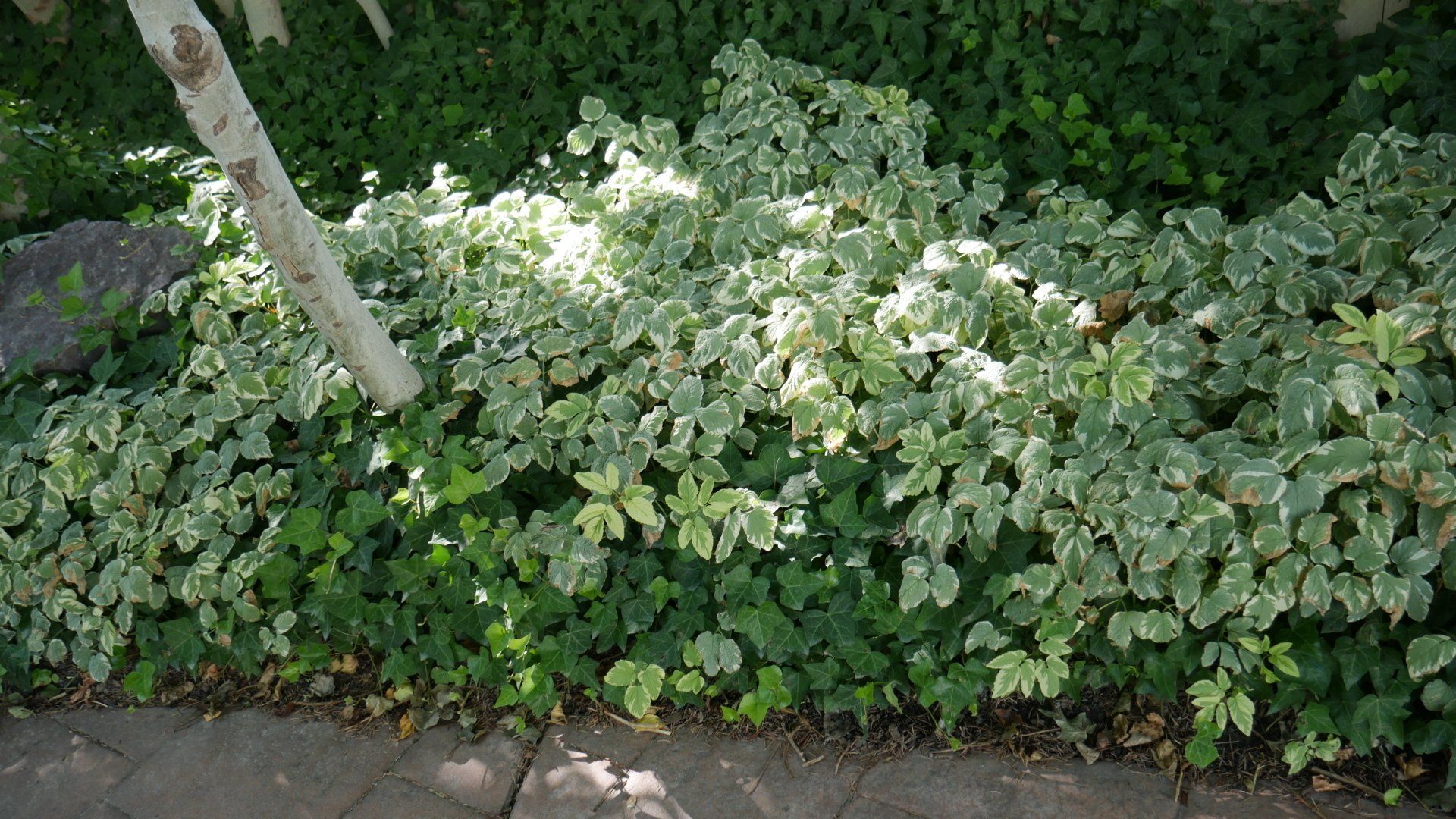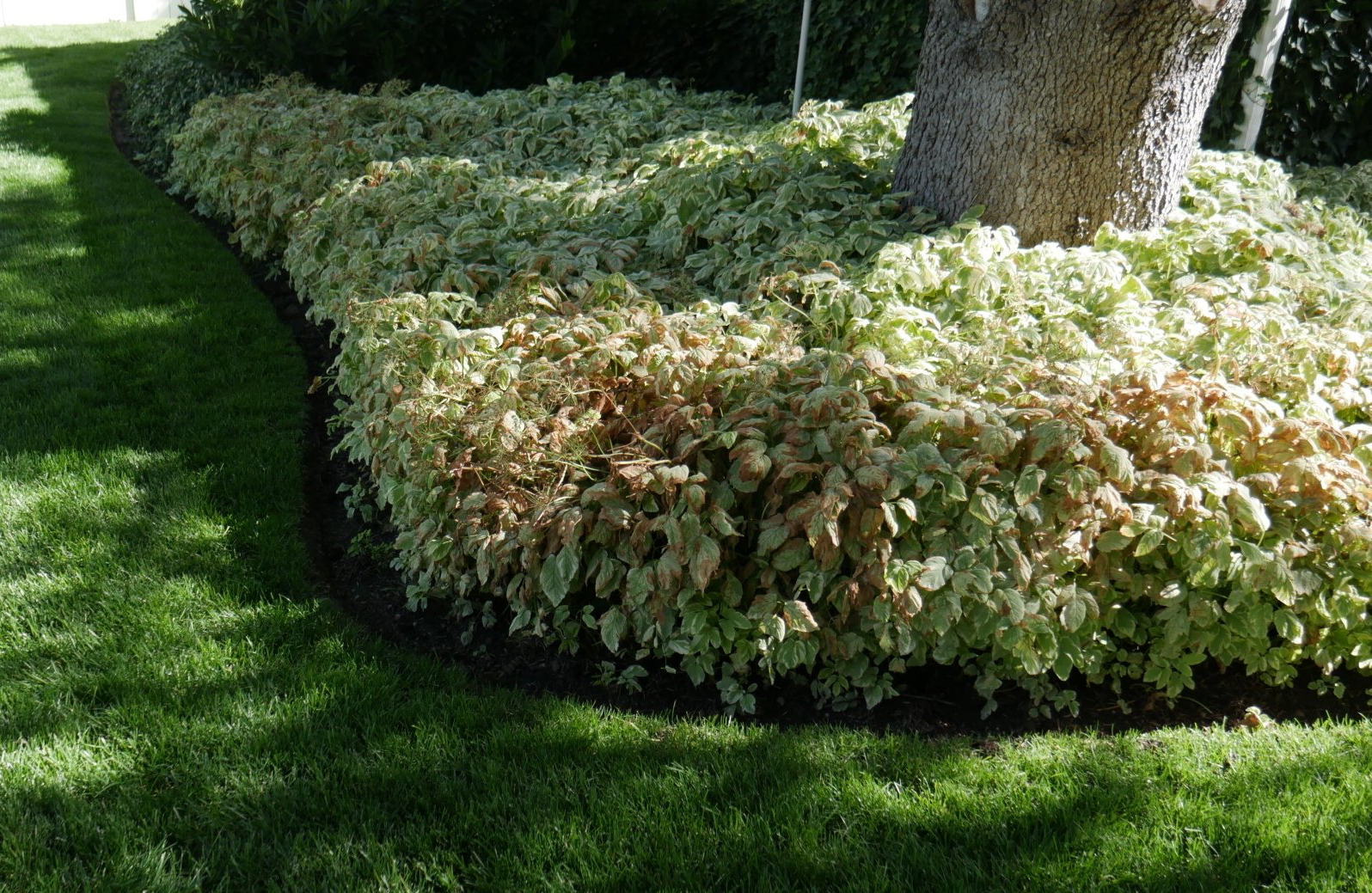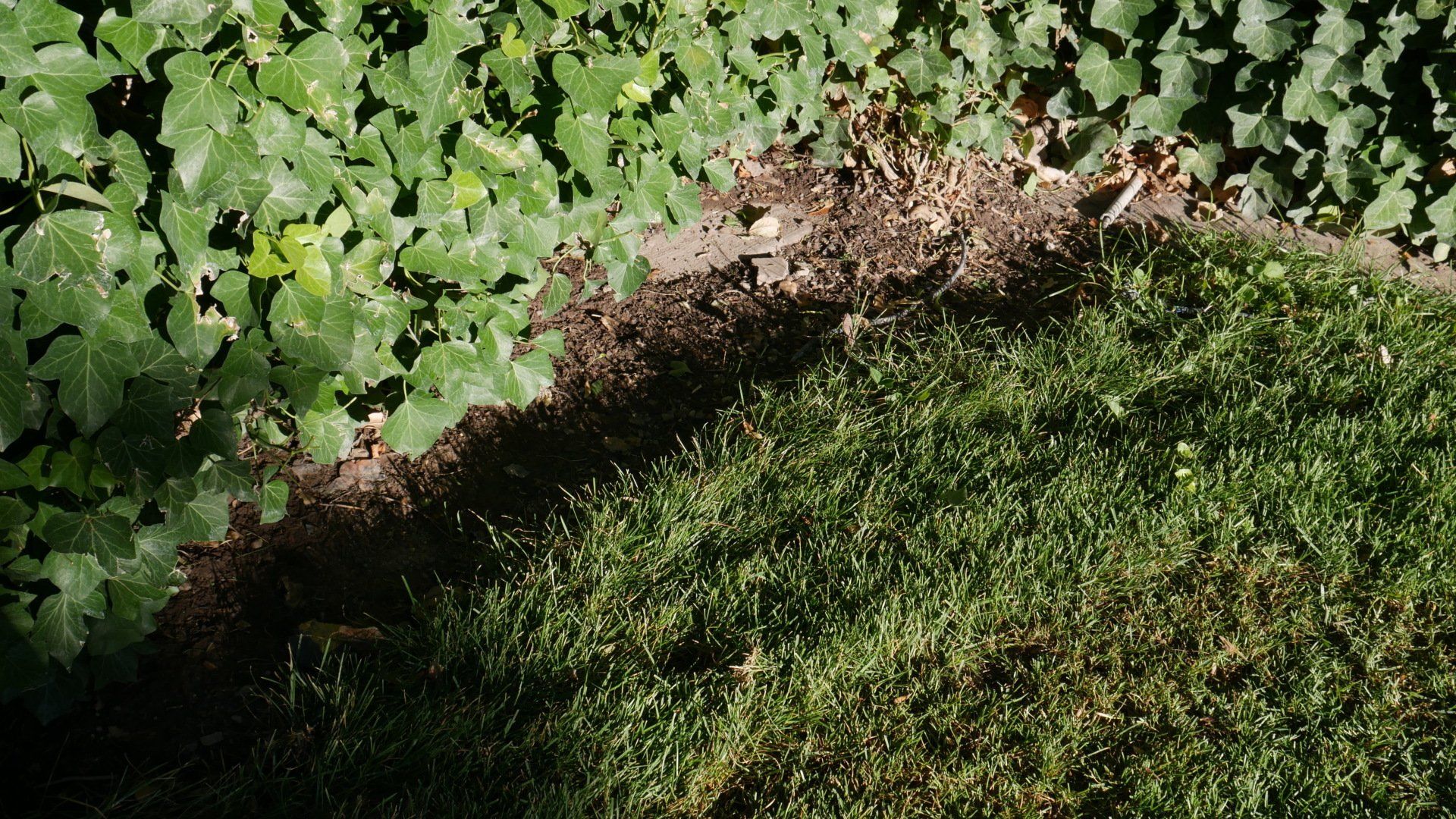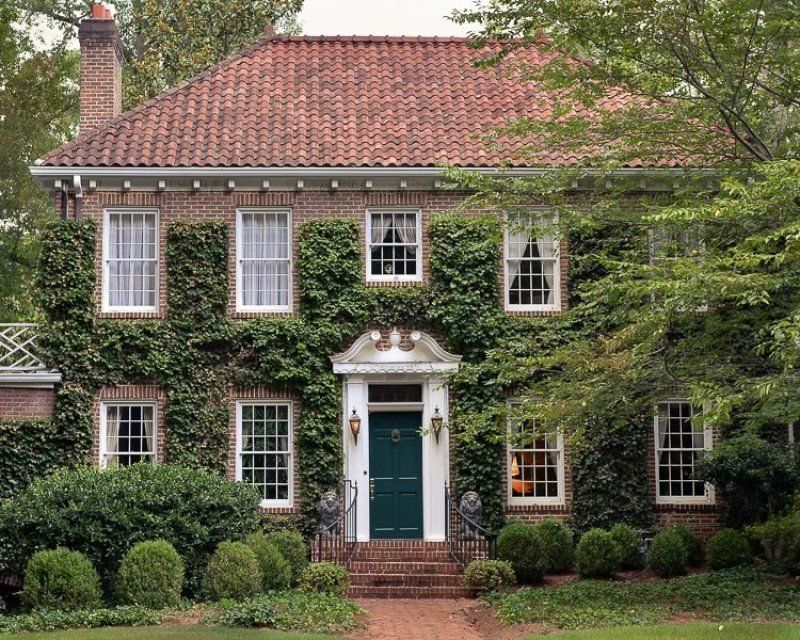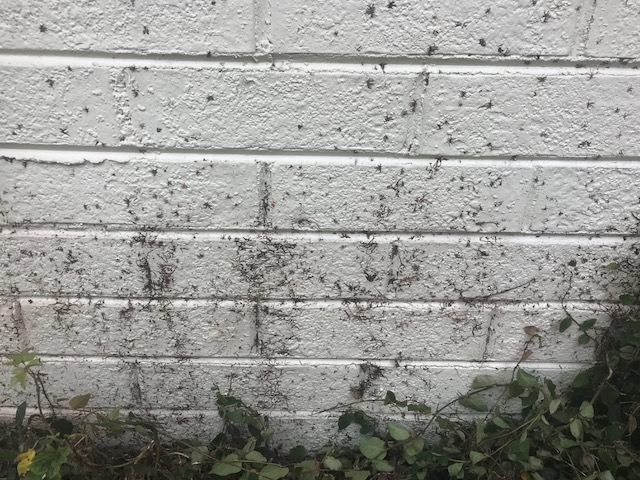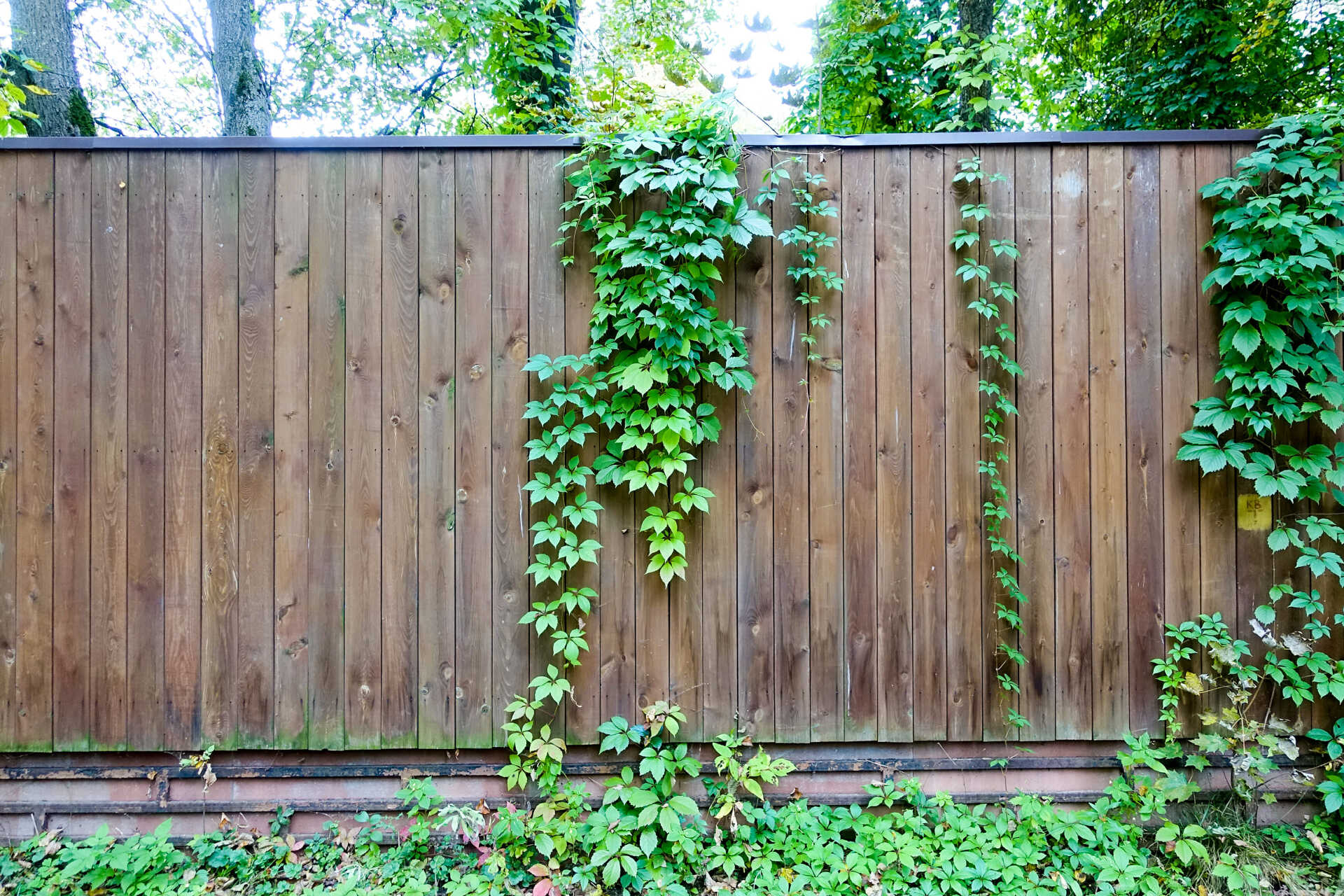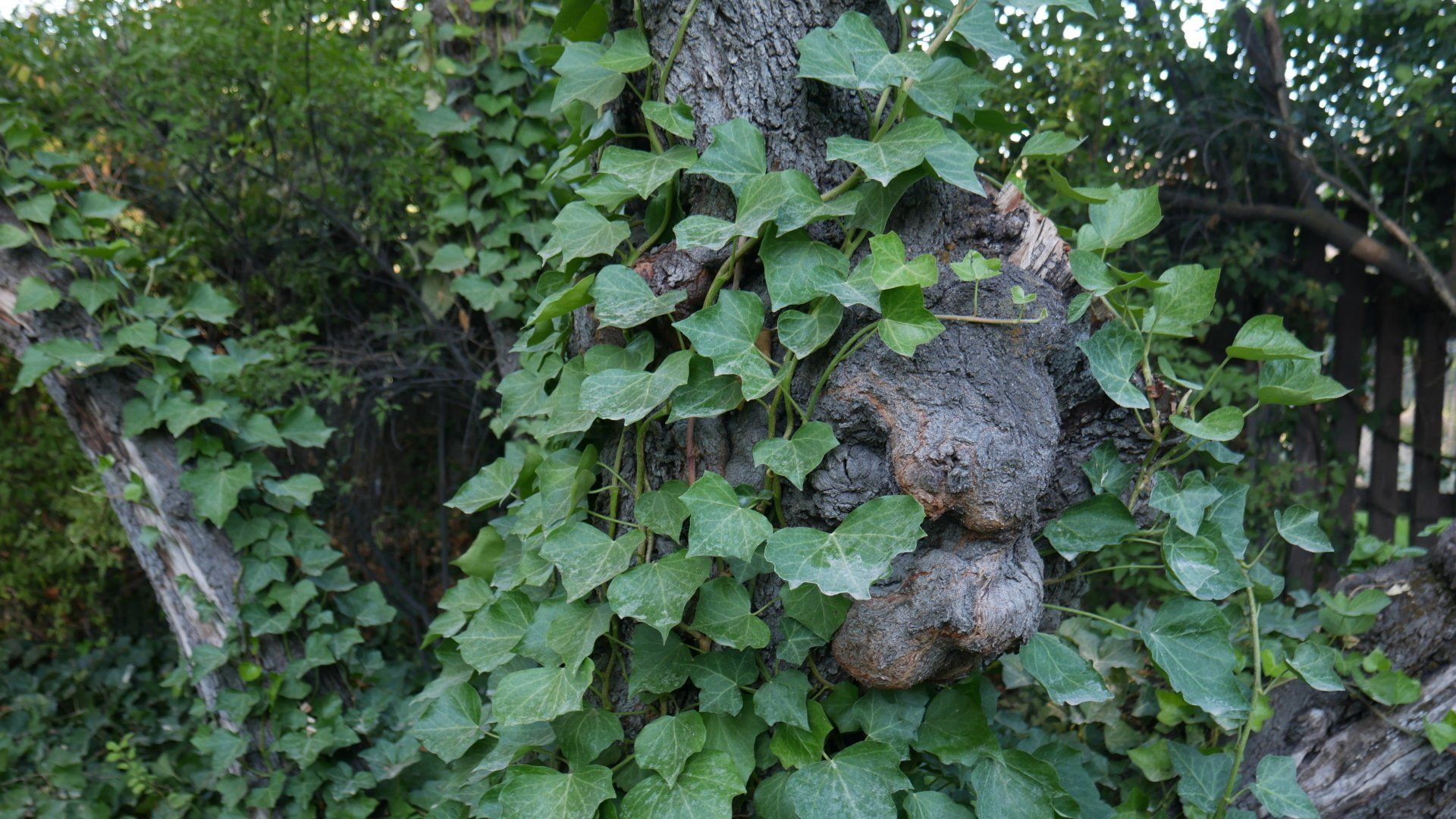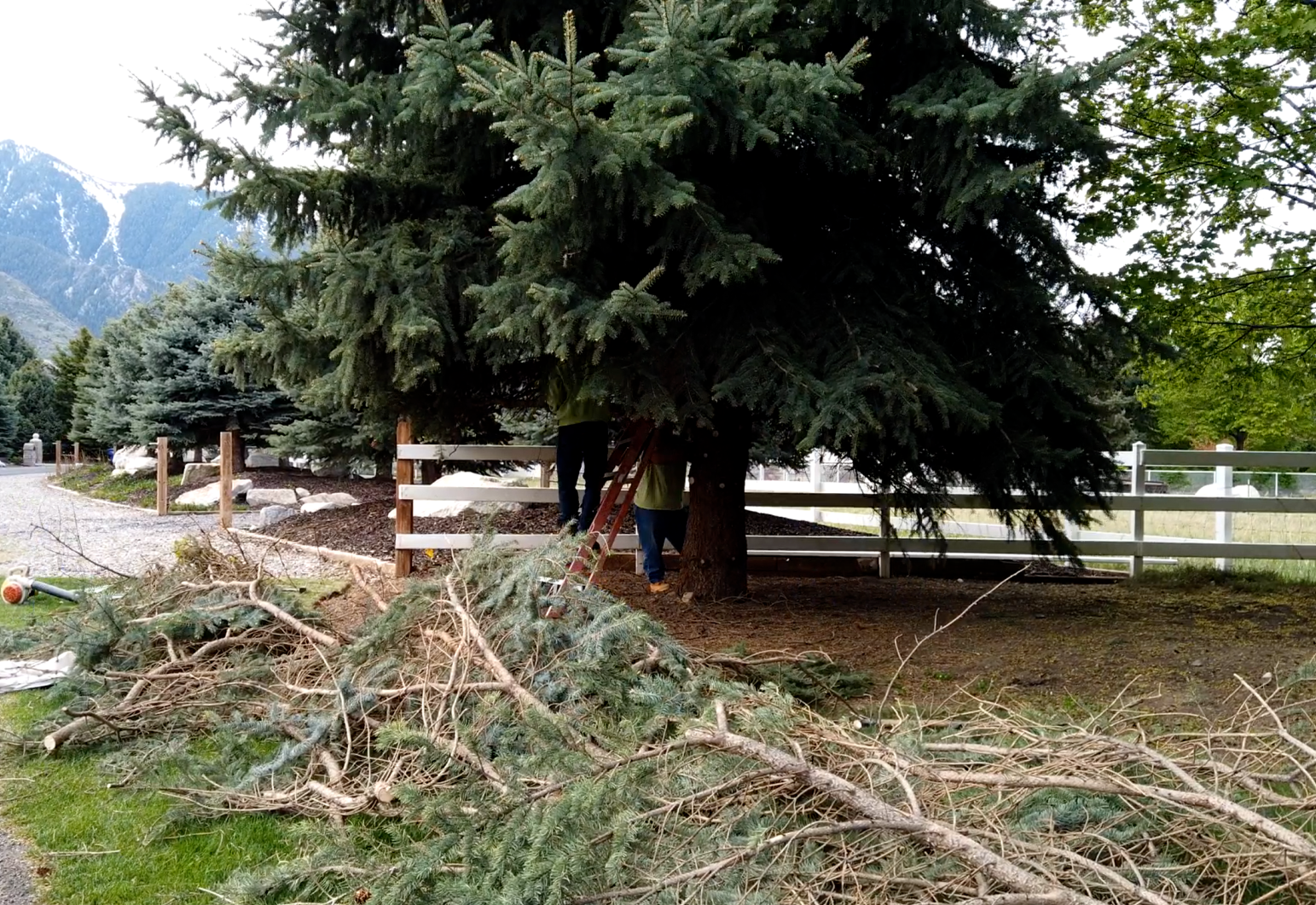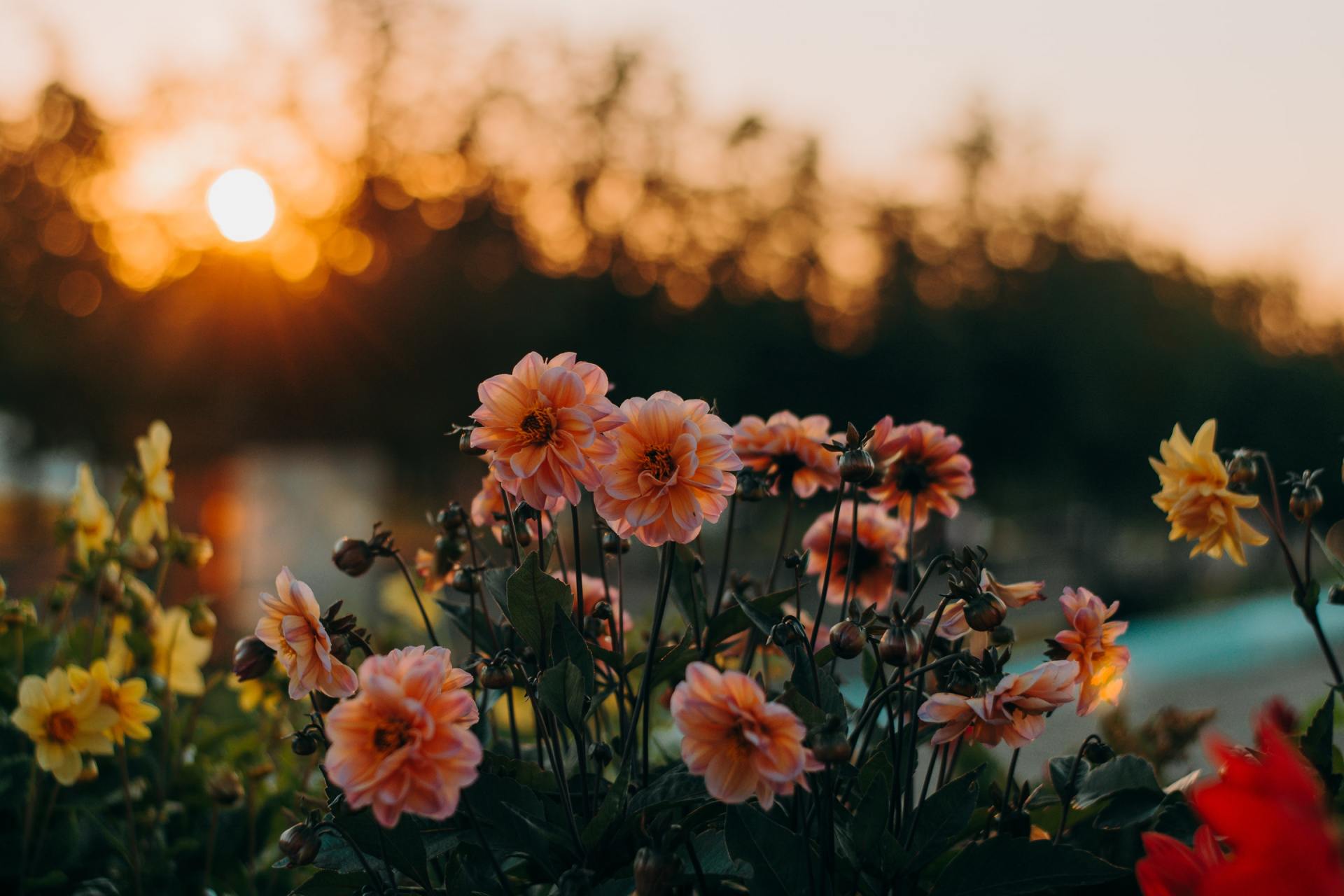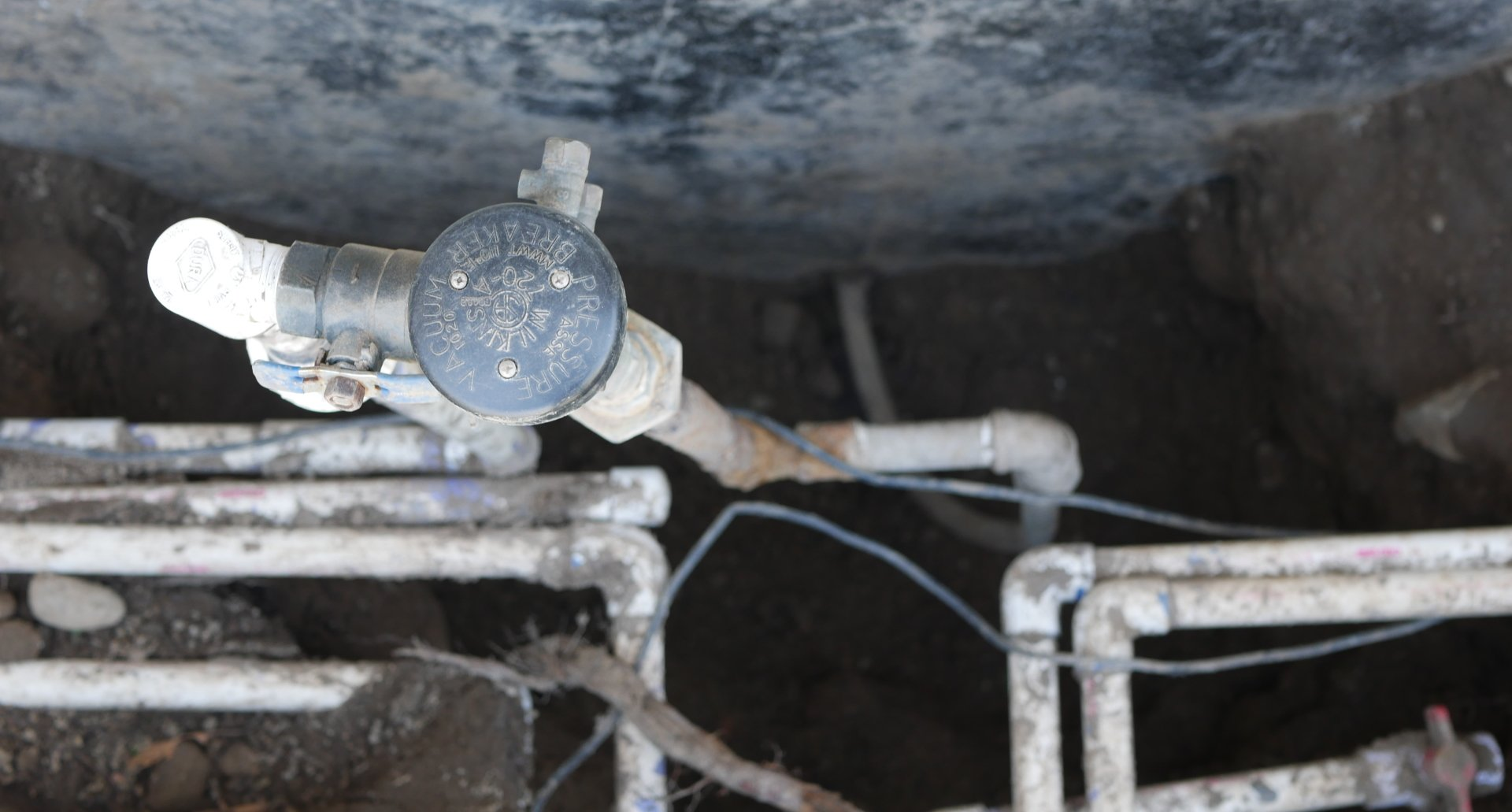Plant Reduction
Keep the Plant Growing Where it was Intended to Grow
Plant reduction is an art. The question we constantly ask ourselves is, "What was the intended purpose of the plant?" And if it has stepped outside of that purpose, it is usually time to bring it back. We train heavily on developing the ability to determine each plant's intended purpose and use many of the same principles and tools for plant reduction as we do with hedges and pruning.
What is the intended purpose of this plant?
This is NOT the Plant's Purpose/Intention
In poorly maintained yards, you'll find walkways buried, roads and driveways hard to navigate, and tree branches growing low over the lawn. Plants need to be cut back so they don't encroach on any other part of the yard.
Anytime a plant impedes us from moving as we should, it needs to be cut back. Branches grow big and inhibit cars and trucks, they block doorways, and even hang low over grass making it hard to walk around or to mow the lawn.
View and Functionality Obstacles
Windows are one of the most expensive parts of a new home. They bring the outside light in, makes a room feel larger, and broadens our perspective. Landscape plans are never designed to block a window. Likewise, doors need to be unencumbered. Plants should also stay off roofs, chimneys, and eves.
Plants Growing into Each Other
Sometimes plants are intended to grow completely separate with soil visible between the plants. The space between the plants is intentional, accenting the size and shape of each individual plant. The same is not true for an English style garden, where the plants are supposed to look more full.
In either case, each plant has an intended area in which it was designed to grow. At Rasmussen, we always say it's OK for plants to touch, but never to grow into each other or over another. Plants are designed to survive and thrive, at all costs. Sometime this means that a more aggressive plant will overtake and overpower another, which should never happen with plants that we want to stay healthy and beautiful.
Optional Plant Reduction
Everything above is included in a standard cleanup (unless, of course, specified otherwise), but there are some additional plant reduction items that are additional options.
It is never intended for ivy to cover a window or door or to grow into the eaves of home. It is very common to intentionally grow ivy up the wall of a house, up a fence or even up trees, and it can look stunning when covering large areas. However, ivy is a tenacious plant and will easily take over other plants in the area. Therefore, ivy must be carefully chosen and maintenance must be planned, accordingly.
It is never recommended to have ivy climb trees because in time the ivy can literally cover and kill the tree. However, some people are willing to take that chance because they like the look.
